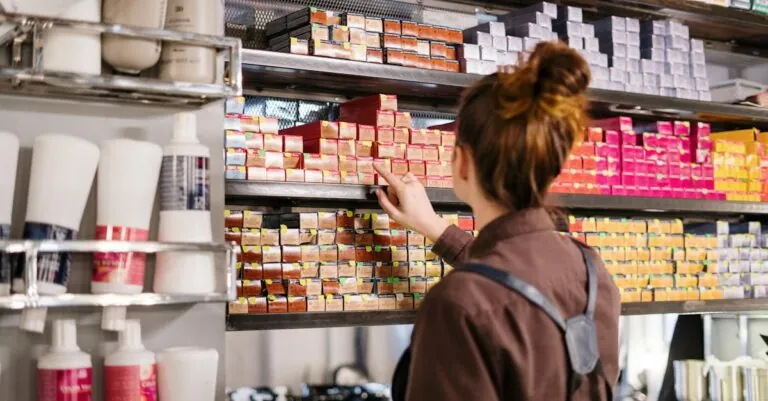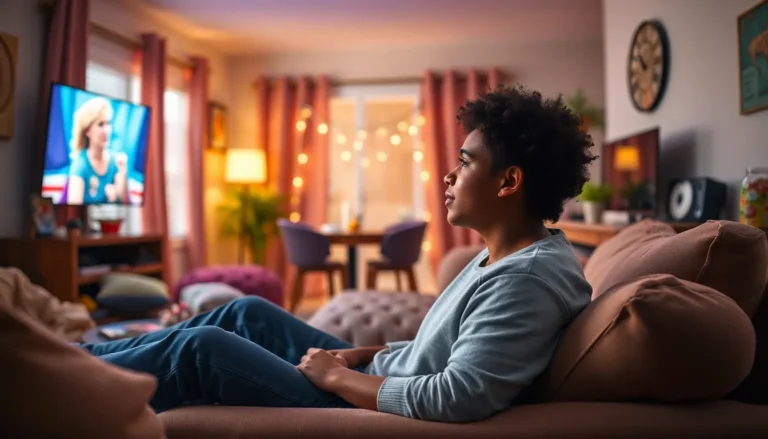In a world where every blemish seems to have its own social media account, color correcting has become the superhero we never knew we needed. Forget about the days of caking on layers of foundation; with the right color correcting techniques, anyone can achieve a flawless complexion faster than you can say “what’s that spot?”
Whether it’s a pesky pimple trying to steal the spotlight or dark circles that scream “I need coffee,” mastering color correction can transform your makeup game. With a splash of humor and a dash of expertise, this guide offers tips that’ll have you looking like you just stepped off a magazine cover. So grab your color wheel and get ready to banish those unwanted hues with style—because who says correcting color can’t be fun?
Table of Contents
ToggleUnderstanding Color Theory
Color theory provides the foundational knowledge necessary for effective color correcting. Understanding how colors interact with each other enhances the makeup application experience.
The Basics of Color Correction
Color correction targets specific skin issues with complementary shades. For example, using green neutralizes redness from blemishes. Yellow counters purple tones, often found in dark circles. Pink tones can brighten dull, sallow skin. Each shade serves a distinct purpose, giving individuals the tools to create a balanced complexion. Mastering this technique leads to a more natural-looking makeup finish.
The Color Wheel Explained
The color wheel visualizes relationships between colors, aiding in correction strategies. Primary colors, blue, red, and yellow, form the foundation. Secondary colors arise from mixing primary colors—orange, green, and purple are created this way. Complementary colors sit opposite each other. For color correcting, this means using green to combat red, and yellow for purple. Utilizing this wheel simplifies the decision-making process when tackling skin imperfections. Understanding these concepts empowers individuals to enhance their beauty routines.
Skin Tone and Undertones
Understanding skin tone and undertones is crucial for effective color correcting. Skin tones fall into three main categories: fair, medium, and deep. Each category can present unique challenges when selecting correction shades.
Identifying Your Skin Tone
Determining skin tone involves assessing how light or dark skin appears. Fair skin often has pale or rosy characteristics. Medium skin typically features olive or warm hues. Deep skin may showcase rich, darker shades, sometimes with cool undertones. Shadowing can aid in identifying skin undertones. Natural daylight provides the best lighting for this assessment.
Matching Colors to Undertones
Matching colors to undertones enhances the effectiveness of color correcting. Cool undertones pair well with shades like pink and lavender. Warm undertones benefit from peach or yellow hues. Neutral undertones offer versatility, working with both warm and cool shades. Consider testing color correctors on the jawline for accurate matches. Choosing the right undertone can significantly improve makeup application.
Essential Color Correcting Products
Effective color correcting relies on the right products. Utilizing specific creams and tools can significantly enhance the results.
Color Correcting Creams and Concealers
Color correcting creams and concealers serve as the foundation for effective correction. Green creams neutralize redness from acne or rosacea effectively. Yellow concealers counteract purple tones under the eyes and add brightness. Pink shades help to perk up dull or sallow skin. Choosing the right formula aids in seamless blending, ensuring a natural appearance on the skin. Many brands offer these products in various textures, from light liquids to thicker creams, so finding the ideal match becomes simpler.
Tools for Application
Application tools make a significant difference in how well color correctors perform. Using a makeup sponge allows for a flawless, airbrushed finish. Brushes can provide more precision, especially for targeted areas like blemishes or dark circles. Fingers also work well for warmth distribution, helping products blend seamlessly into the skin. Various tools can offer unique benefits, so experimenting with different options allows individuals to discover what suits their techniques best.
Techniques for Effective Color Correction
Effective color correction involves specific techniques that enhance application and results. Utilizing various methods can significantly improve the overall makeup look.
The Dabbing Technique
Dabbing provides precision and control during application. It helps deposit color correctors directly onto problem areas without disrupting foundation or other products. Padding gently with a makeup sponge or fingertip ensures even distribution. Choose the right amount of product; too much can lead to an overly heavy look. This technique promotes a seamless blend and targets imperfections like dark circles and redness effectively.
Layering Products for Best Results
Layering products enhances the color correction process. Start with a thin layer of a color corrector, allowing it to set before adding foundation. Adjust the opacity gradually to maintain a natural finish. For optimal results, select complementary shades that balance each other. This approach allows for blending without overwhelming the skin. Each layer should serve a purpose, aiming to create a smooth canvas that addresses various concerns with precision.
Common Color Correction Mistakes
Color correcting can enhance makeup application, but many make common mistakes. Awareness of these errors can lead to better results.
Overdoing It with Colors
Applying too much color corrector can overwhelm the natural skin tone. Using excessive amounts creates a patchy or theatrical appearance instead of a seamless blend. Subtlety matters; a little bit goes a long way. Start with a small amount and build it up gradually. Achieving balance is crucial, as overuse distracts from the desired effect. Stick to areas needing correction, and blend well to maintain a natural look. A light-handed approach ensures correction looks effortless rather than forced.
Choosing the Wrong Shades
Selecting incorrect color shades can render color correction ineffective. Colors must complement skin tones; mismatched shades create an unnatural effect. For example, using the wrong green shade can exacerbate redness instead of neutralizing it. Testing shades on the jawline helps in finding the right match. Knowledge of undertones also guides better choices; cool tones suit different shades than warm tones do. Prioritizing precise color selection increases chances of achieving the perfect complexion. Always remember to consult a color wheel for guidance.
Mastering color correcting can transform anyone’s makeup routine into a more enjoyable and effective experience. By understanding color theory and the specific needs of their skin, individuals can tackle imperfections with confidence. Choosing the right products and application techniques is essential for achieving a flawless look.
With practice and experimentation, anyone can refine their skills and avoid common pitfalls. Embracing the fun of color correcting not only enhances one’s appearance but also empowers them to express their unique beauty. So grab that color wheel and start correcting—flawless skin is just a few dabs away.








